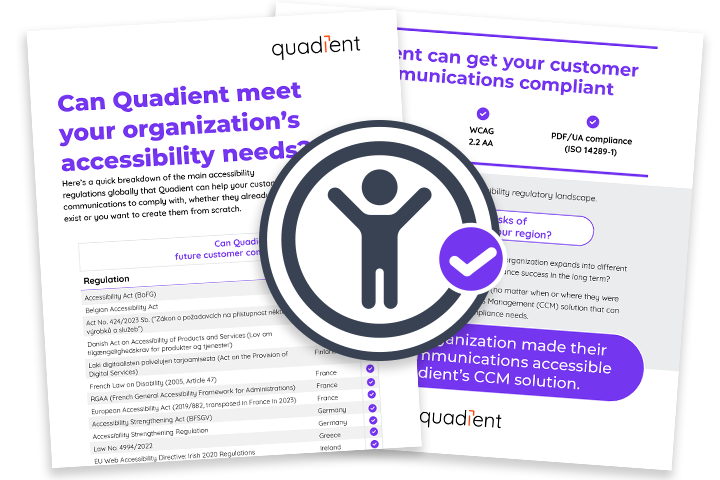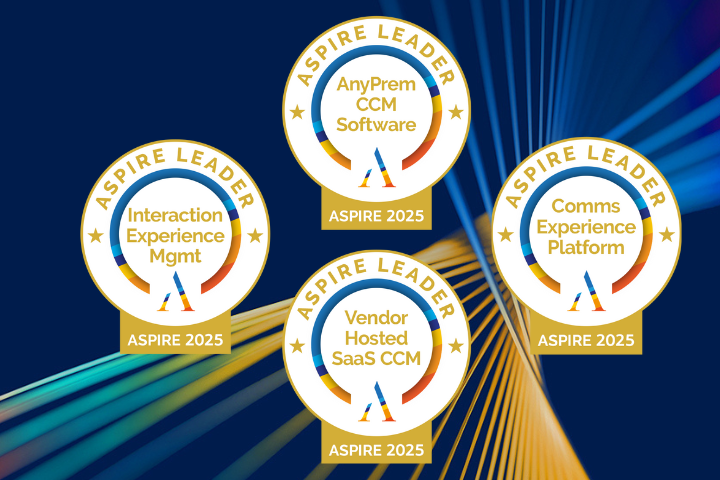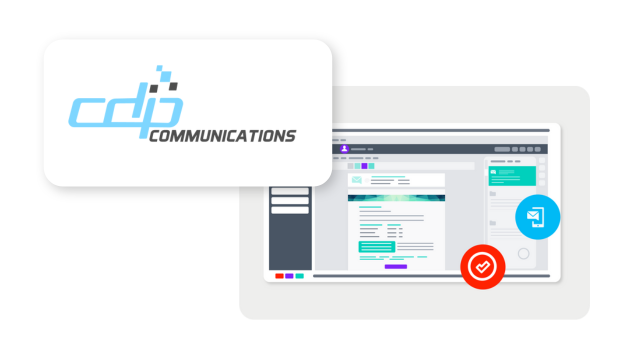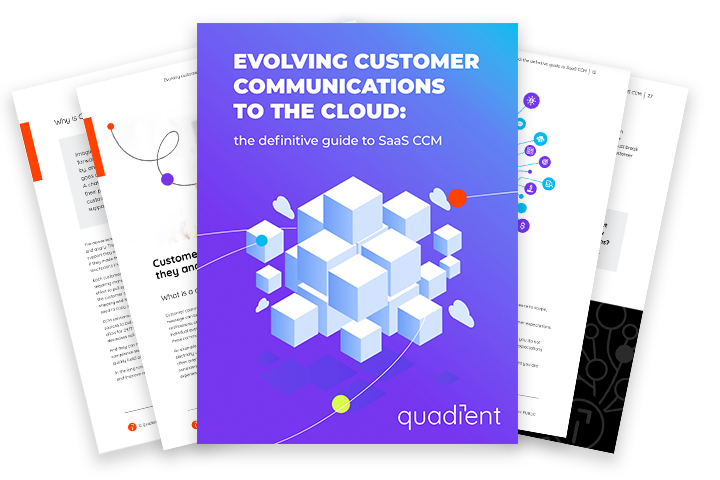Introduction
Traditionally, Customer Communication Management (CCM) software was deployed on-premise with perpetual licenses. But now, a new generation of CCM solutions has arrived: cloud-based Software-as-a-Service (SaaS) options. These modern solutions are an alternative to the license model with a subscription model linked to usage.
What is the cloud?
The cloud is a digital storage space that allows data and software to be stored on remote servers. It's like renting storage space in the digital realm.

There are three main cloud types:
- IaaS (Infrastructure-as-a-Service): You rent basic infrastructure like servers and storage.
- PaaS (Platform-as-a-Service): You get a platform for application development and deployment.
- SaaS (Software-as-a-Service): Applications are delivered via the internet.
Is the cloud secure?
The cloud often raises security concerns. However, many organizations already use cloud-based solutions like Salesforce, O365, and Google Docs. The cloud has been around for years, and data security measures continue to advance.
Implementing SaaS and PaaS solutions for your organization is efficient, cost-effective, and secure. Enterprise-grade solutions are typically based on modern security models that are superior to traditional software applications. So, there’s no need to worry about data security when using the cloud.
Why migrate to the cloud?
Moving to the cloud is worth considering if you want to improve your customer communications. The way customers prefer to communicate is changing rapidly. If your technology can't keep up, you risk falling behind.

The decision to move to the cloud, whether partially or entirely, depends on the specific challenges you're currently facing. It's all about finding the right solution for your unique needs.
Common challenges with legacy technology
Maintaining on-premise systems require extensive IT resources. Managing them involves a significant investment in expertise, physical infrastructure, data center space, and resources. This can make it challenging to scale operationally and financially.
On-premise systems are not updated as frequently. Your installation might lag by several versions. As a result, you may be unable to support the latest communication channels or comply with new regulations.
Additionally, vendor development strategies can stifle innovation. In recent years, big companies buying CCM solutions have reduced R&D support to make more money from existing maintenance payments. As a result, the software you purchased a decade ago may no longer have an innovative roadmap that aligns with your needs.
These factors can result in your system not promptly delivering the most relevant messages to consumers in their preferred channels. It might also require more effort from your CCM team to manage messages, adhere to internal audits, and maintain quality control.
If you're experiencing challenges like these, it might be the right time to consider migrating your CCM application to the cloud. These solutions are designed to stay automatically up to date. They are easier to manage, more cost-effective, and improve customer experience without jeopardizing compliance.

Benefits of cloud CCM
Migrating to the cloud offers several advantages, including:
1. Speed to market
SaaS cloud solutions can be up and running in a few hours, reducing downtime and business disruption. The ease of installation and integration of software across systems is due to the preconfigured and designed platform. This applies to both local servers and computers.
Once deployed, users only need a stable internet connection, access to a browser, and login credentials to access the software.
2. Speed of innovation
SaaS solutions update in real-time and feature automated upgrade mechanisms that require minimal testing.
Incrementally introducing changes to users has a real advantage as it gradually enables them to adapt to new features. This approach is more effective than infrequent significant changes that take years to learn.
3. Time and money savings
Legacy systems require ongoing maintenance, consuming both time and money. Migrating to the cloud can save you both.
Cloud-native environments are set up and maintained by the service provider, significantly reducing the burden on your often overstretched IT resources. Managed services also provide regular maintenance, bug fixes, and automatic platform updates, freeing up your IT department for more strategic projects.
4. Digital transformation
The cloud is crucial in digital transformation, enabling businesses to rapidly adapt and evolve. With cloud technology, organizations can quickly implement new solutions, streamline processes, and respond to changing market conditions. This enhanced agility is vital for companies looking to remain competitive in today's fast-paced business world.
5. Improved customer experience
Cloud-based solutions offer greater flexibility and scalability, leading to an improved customer experience. Businesses can quickly scale resources up or down as needed, ensuring they can efficiently serve their customers.
In addition, cloud-based solutions provide the flexibility to offer new services and features to customers, enhancing their experience and satisfaction.
6. Business users' delight
Cloud platforms are designed with business users in mind, providing a user-friendly interface that anyone in your organization can use. This ease of use makes it simpler for employees to adopt new tools and technologies, increasing productivity and efficiency.
7. Boost agility
Cloud technology improves agility by enabling teams to communicate effectively from anywhere in the world. This capability streamlines the creation of top-notch customer experiences through secure customer communications, ensuring that businesses meet their customers' needs regardless of location.
8. Limitless scalability
Cloud-managed services offer simple and adaptable solutions capable of supporting businesses of any size. Scalability is vital for growing companies. It lets them easily grow their resources as they expand.
Additionally, cloud technology provides infinite scalability, allowing businesses to grow without worrying about infrastructure limitations.

Choosing the right approach for legacy application migration
When moving from CCM legacy to the cloud, a structured plan is key. It reduces disruptions and ensures a smooth shift for your customer communications.
Here are some steps to consider:
- Develop a comprehensive migration plan: First, identify the customer communication workflows that need to be migrated. Then, determine the migration approach and create a timeline for the migration.
- Assess your current CCM infrastructure: Next, evaluate your existing CCM infrastructure, identify dependencies, and determine potential obstacles.
- Choose the right cloud provider: Select a provider that best suits your organization's needs. Consider cost, security, and compliance requirements specific to customer communications.
- Optimize CCM workflows for the cloud: Modify CCM workflows to take advantage of the cloud's scalability, flexibility, and availability.
- Test thoroughly: Test CCM workflows in the cloud environment to ensure functionality, performance, and security.
- Migrate in phases: Migrate CCM workflows in phases to minimize business disruption. Ensure that each phase is successful before moving on to the next.
- Train employees: Train employees on the new cloud environment, tools, and processes specific to customer communications.
- Monitor and optimize: Monitor the cloud environment and identify areas for improvement. Optimize CCM workflows and infrastructure as required to improve the customer experience.
The key to a successful CCM legacy to cloud migration is careful planning, thorough testing, and a phased approach that minimizes disruption to the business and ensures the seamless delivery of personalized, compliant, and meaningful customer communications across preferred channels.
What to look for in a SaaS CCM solution
Look for a solution with advanced functionality, interoperability, and security. At the same time, it should be easy for non-technical users to craft impactful customer communications.
The ideal solution should break down silos in your organization and promote two-way communication. It should also be able to support complex processes like digital onboarding.
Download our eBook Evolving Customer Communications to the Cloud: the definitive guide to SaaS CCM to learn more about this topic. It includes a handy checklist to help you plan your CCM cloud migration journey.
Introducing Inspire Evolve
Inspire Evolve is a high-performance SaaS CCM solution designed by Quadient, the world's most trusted CCM provider. This enterprise-grade solution is built for the future by the industry's largest R&D team. Inspire Evolve empowers non-technical business users to easily design, personalize, and securely deliver human-centric communications with minimal IT effort.
Conclusion
A modern CCM solution that enables your business users to deliver personalized, compliant, and meaningful customer communications via preferred channels is essential to deliver a delightful customer experience. SaaS CCM will help unlock customer value and enhance the overall customer experience. Moving to the cloud is an investment in the future, providing long-term advantages for your business.










